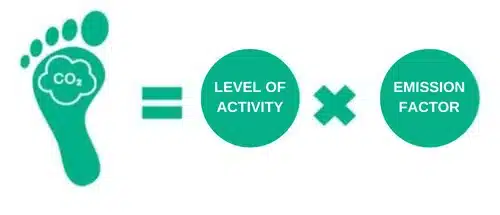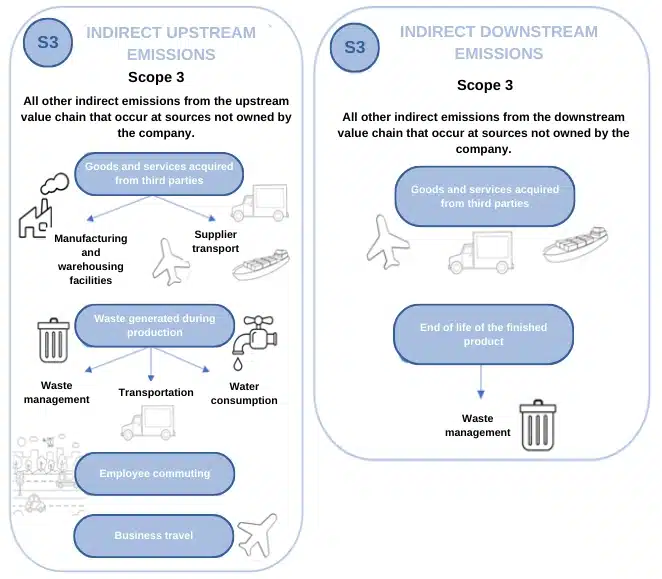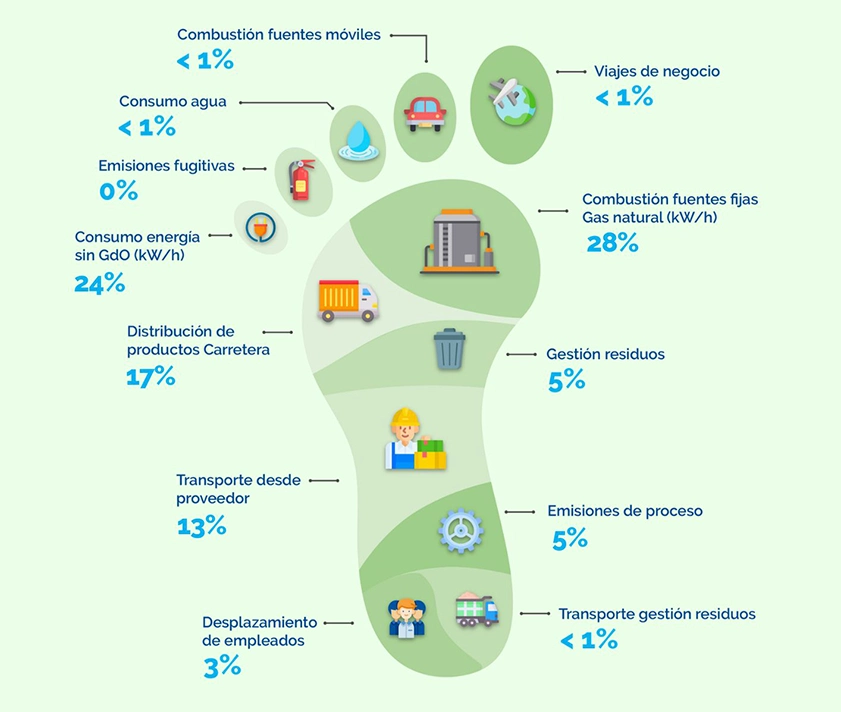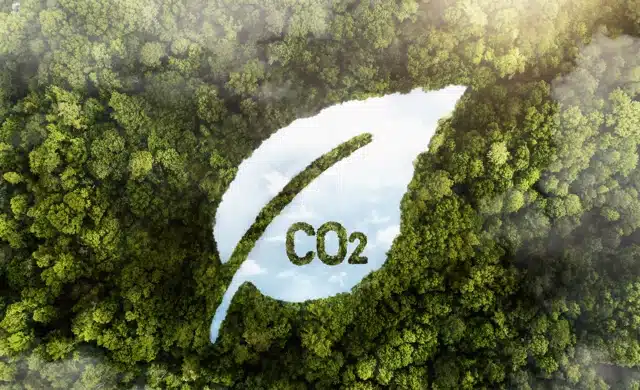
10 Nov We continue to move towards decarbonization: Rieusset’s carbon footprint
Index of contents:
-
- The importance of measuring and reducing the carbon footprint
- How is the carbon footprint calculated?
- Different scopes of the carbon footprint
- Rieusset’s commitment: Measuring to improve
- Rieusset’s actions to reduce our carbon footprint in 2025
- The importance of transparency and commitment to sustainability
The importance of measuring and reducing the carbon footprint
In a global context where sustainability and energy transition are increasingly prioritized, measuring the carbon footprint has become a key tool for managing the environmental impact of organizations. The carbon footprint represents the total amount of greenhouse gas (GHG) emissions generated directly or indirectly by a company, expressed in tons of CO₂ equivalent.
At Rieusset, we firmly believe that what is not measured cannot be improved. That is why, since 2019, we have been calculating our carbon footprint and, year after year, we are expanding the scope and accuracy of the data to identify real opportunities for reduction and improvement.
How is the carbon footprint calculated?
Calculating the carbon footprint is not a simple process, but it is essential for making informed decisions about our environmental impact. This process involves a series of detailed steps:
- Defining the scope and establishing organizational and operational boundaries. The first step is to establish operational boundaries, i.e., define the scope of our carbon footprint. There are three scopes in carbon footprint calculation, but according to the GHG Protocol (standard for calculating an organization’s carbon footprint), only scopes 1 and 2 are mandatory for reporting carbon footprints. For this reason, and due to the complexity of the calculation, at Rieusset we have been calculating our carbon footprint since 2019 in scopes 1 and 2. We will explain later on what each scope consists of.
- Calculating the company’s activity data. Once the boundaries have been defined, accurate data is collected on the company’s activities that generate GHG emissions. This data includes electricity consumption, natural gas consumption, solvent emissions, gasoline use, among others.
- Finding the specific emission factors. The carbon footprint is the sum of CO2 emissions generated by the organization’s various activities, such as emissions from gas or electricity consumption. In order to calculate this total, the data must be converted to the same unit of measurement using emission factors. These emission factors are issued by the Ministry of Ecological Transition and are standardized. For example, 1kWh of gas is equivalent to 0.182 kg of CO2. Once all the activity data has been converted to the same unit, it is possible to obtain a result.
- Obtaining results and interpreting.Finally, the results are interpreted to understand the total impact of the company’s operations. This analysis is crucial for identifying areas for improvement and developing effective emission reduction strategies.
Different scopes of the carbon footprint
The carbon footprint is classified into three scopes, each of which covers different types of emissions:
Scope 1: This refers to direct emissions from the company. This includes: gases from fixed sources (fossil fuel combustion) such as natural gas (boilers), emissions related to the production process such as VOCs (baths, solvent recovery), fugitive emissions such as fire extinguishing equipment, air conditioning or refrigeration equipment, and gases from mobile sources (fossil fuel combustion) such as the company’s leased cars.
Scope 2: This scope covers indirect emissions associated with energy purchased and consumed by the company, such as electricity. Although the company does not produce these emissions directly, they are a consequence of its energy consumption and must therefore be accounted for.
Scope 3: This is the broadest and most complex scope, as it includes all other indirect emissions throughout the entire value chain: raw material production, production waste management, business travel, employee commuting, water consumption, and all transportation by suppliers, customers, and waste managers
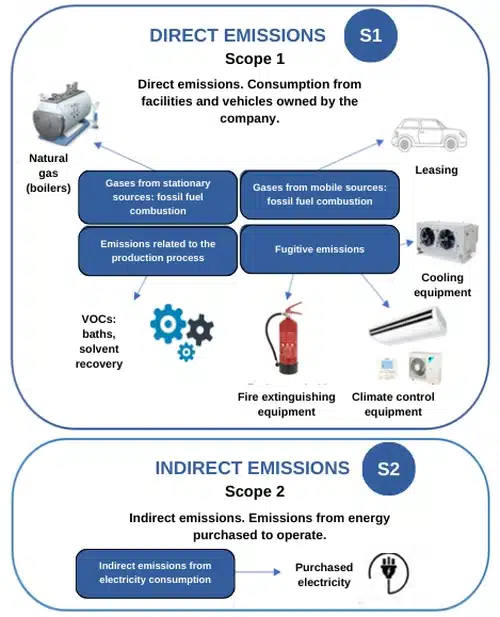
Scope 3 is particularly difficult to calculate due to the large amount of data involved and the difficulty in obtaining it. However, this year Rieusset has decided to include this scope in its annual calculation, demonstrating its strong commitment to transparency and sustainability. This approach reflects a high level of corporate responsibility, moving away from greenwashing and adopting a more rigorous and comprehensive approach.
Rieusset’s commitment: Measuring to improve
In recent years, Rieusset has progressively expanded the scope of its measurements. From the initial calculation of scopes 1 and 2, which include direct and indirect emissions from energy consumption, we have moved towards a more comprehensive measurement, progressively incorporating scope 3, which covers all indirect emissions from our value chain.
In 2025, we have consolidated this process by integrating a digital system for collecting and analyzing environmental data, which allows for greater accuracy and real-time monitoring. This system facilitates the traceability of consumption, the identification of deviations, and more informed decision-making to reduce our emissions.
In addition, we continue to align our work with the international standards of the GHG Protocol and with the new European requirements derived from the CSRD Directive and the ESRS (European Sustainability Reporting Standards), reinforcing our commitment to data transparency and comparability.
Rieusset’s actions to reduce our carbon footprint in 2025
Calculating our carbon footprint is not an end in itself, but rather a starting point for action. In 2025, we have launched new initiatives that reinforce our commitment to decarbonization:
- Machinery timers: We have conducted a study to determine whether it is worth the effort to turn a machine off and on again at the beginning of the week (since some machines consume more energy when turned off and on again than when left on). The following machines have been adapted to have a built-in timer so that they turn off during weekends throughout the year:
- Automatic cylinder engraving line: At Rieusset, we have an engraving line that is capable of automatically engraving printing cylinders. Significant electricity savings were observed, and now there is a procedure in place to stop some of the existing processes on the line once the pending work has been completed.
- Vending machines: In the Rieusset dining room, there are four beverage and coffee machines that do not need to be refrigerated over the weekend, as there are no staff working.
- Water heaters: The same applies as in the previous point: there will be no staff working over the weekend, so there is no need to have the heaters on to heat water that no one is going to use.
- Change to LED lighting: Over the past year, we have completed the transition to LED lighting throughout our facilities. This change has not only improved energy efficiency but also reduced electricity consumption for lighting by 70%. LED lighting is not only more efficient, but also has a longer lifespan, reducing the need for frequent replacements and, therefore, the waste generated.
- Inspection and repair of compressed air installations: Air leaks in a production plant are common and can represent a significant loss of energy. At Rieusset, we have identified and repaired these leaks, resulting in a notable reduction in costs and energy consumption. In addition, we have implemented a plan to conduct annual audits that allow us to maintain exhaustive control over these losses and act quickly to correct them.
- Waste reduction and circularity: We continue to work on the recovery of support materials and the efficient segregation of waste, promoting a more circular economy within the plant.
- Sustainable transportation and mobility: Since we are aware that transport accounts for a significant proportion of Scope 3 emissions, Rieusset has reinforced sustainable mobility for employees by creating parking spaces for bicycles and electric scooters and optimizing transport from suppliers and to customers.
Rieusset’s carbon footprint (contribution of each one of our activities)
The importance of transparency and commitment to sustainability
At Rieusset, we understand sustainability as a comprehensive commitment that goes beyond regulatory compliance. Publishing our carbon footprint and communicating our actions is part of a policy of transparency and corporate responsibility.
We will continue to measure in order to improve, act to reduce, and communicate our progress honestly, because only in this way can we make a real contribution to a more sustainable future.
| We Manufacture: | Meet Rieusset: |



